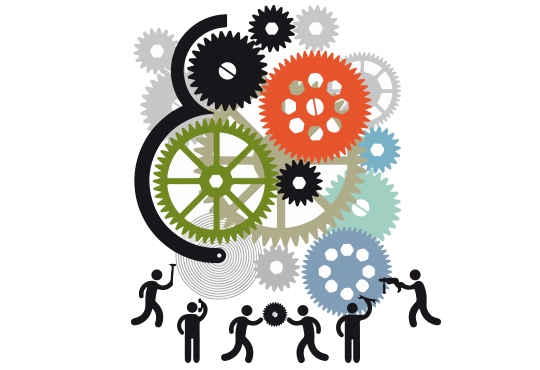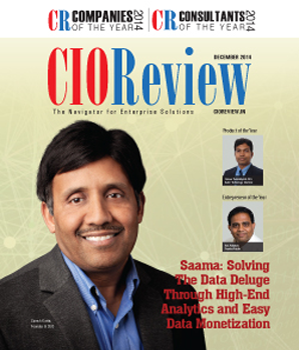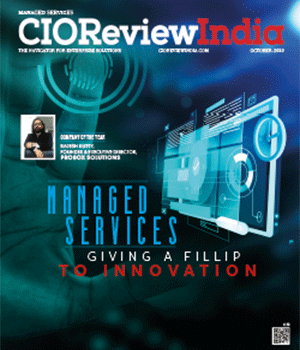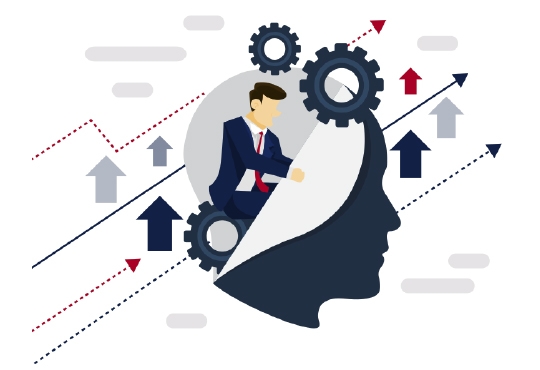
Machine Learning Trends In 2021
Kavitha Siddada, Head of Design Engineering, Shell | Wednesday, 14 April 2021, 09:01 IST

An IT leader with 25+ years’ experience in Technology Engineering Transformation, IT Strategy, Organizational Planning, Business Strategy Enablement, Delivery and Operations and more, she leads business with technology inclusion.
Machine Learning is evolving rapidly to be a clear choice for technologists and business consultants to solve the future problems and to shape the trends of end consumer needs driving quality of life. The Pandemic has put forth a world ahead of us, which is accelerated with Customer Centric scenarios to be solved in each and every business domain and ML is gaining recognition to play a key role with emerging trends of applications in data mining, natural language processing, speech & Image recognition as few levers.
Machine Learning powered as a subset of Artificial Intelligence, coupled with Smart Technologies and Bid Data are going to the game changers for digital transformation across every industry irrespective of location to drive competitive edge with speed and agility. While Machine learning has been around for centuries, the prominent need for AI and Deep learning have put ML on the forefront for the current industry revolution 4.0 powered through digitalization. With the precursor of proven Bigdata technologies, the ability to have large sets of data have opened avenues for new areas to replicate the ML applications successfully to scale, to be fit for purpose and to drive cost optimization. Let us look at few of the latest trending areas.
Personalized Marketing – Continuous to be the popular use case for these recognition and correlation engines, along with clustering techniques to identify the potential customers, anticipating their likes and dislikes, connecting the behavior patterns across business domains – bringing in correlation across different industries to predict new business products and revenue models that are credible & profitable, backed with data.
Security – Cyber Security, Physical Security, Fraud Identification and Fault Tolerances – leveraging unsupervised learnings models, semi supervised learning models coupled with image recognition technologies - is an area where it is continuing to grow at a rapid pace. We see multiple use cases coming up in identifying vulnerabilities in our applications and proactive monitoring of data using instant data capture and large unlabeled data sets to drive the patterns we do not expect to see and identify and explore the anomalies. It is also leveraged to enforce compliance thru proactive monitoring and to create audit trails. The technologies are quickly being replicated across the sectors to protect the end consumer, to keep the companies and the environment secure, earning the trust of the customer.
“With the precursor of proven Bigdata technologies, the ability to have large sets of data have opened avenues for new areas to replicate the ML applications successfully to scale, to be fit for purpose and to drive cost optimization”
Virtual assistants – most commonly known use cases are Alexa, Siri the voice assistants, the leverage of ML approaches, semi supervised learning, reinforced learning models, to enhance the response of the chatbots, robots is leading to acceleration of robotic process automation – “Automation of Automation”. It varies from simple use cases of operations from a banking consumer chatbot to highly intuitive robots working in unmonitored, difficult environments 24X7 – identifying faults, defects, leaks to enable security for the environment and the staff around in supply chain, industrial and manufacturing sectors and large capital project implementations is driving speed and quality.
New Product Identification and tracking - Healthcare is a good example which is rapidly growing, adopting to ML. It is leveraged in various areas like identification of new products, manufacturing of new products - with highest standards of quality controls enforcement, supply chain management, exceptions in traceability of drugs lifecycle till it lands with consumer. It is also leveraged for identification of disease patterns with image recognition and analysis of high spectrum data, and many more – here the Deep learning techniques with more trained data is paving for better accuracy of the forecasted outcomes with little supervision – Leading to affordable healthcare costs.
As Machine Learning continues to evolve and AI becomes even more practical to implement across the enterprises and has increased investments across the industries - to simplify business operations to add to the bottom line, make the systems more secure and credible, earn the trust of the end consumer to trust us with their data, the Machine Learning adoption and war of the talent is going to intensify.
CIO Viewpoint
With Managed Services Organizations Can Reduce...
By Krishnakumar Madhavan, Head IT & Innovation, KLA Software India Pvt Ltd
By Amandeep Singh, Vice President & Group Head - IT Infrastructure, Thomas Cook India Limited
By Brian Clarke, Solutions Architect-Networking and Collaboration, OneNeck IT Solutions
CXO Insights
Innovation in IT: Meeting Evolving Demands and...
By K Shivasankar, Vice President - Technology & Solutions, India, NTT DATA Inc
Low-Code/No-Code: The Key to Intelligent...
By Sachin Panicker, Chief AI Officer, Fulcrum Digital
Maximizing Business Insight with Big Data...















